A sediment cell is a section of coast that has been controlled for management purposes, where shingle and sandstone geology is contained and regulated to keep a healthy sediment budget. The depth at which calcium carbonate dissolves as fast as it accumulates is called the calcium carbonate compensation depth, or calcite compensation depth, or simply the CCD. Thus, considering their nature, cosmogenous sediments could be described as the rarest ones. Coarse lithogenous sediments are less common in the central ocean, as these areas are too far from the sources for these sediments to accumulate. Deep sea sediment can range from red to chocolate brown due to the iron oxide found on the ocean floor. WebCosmogenous Sediments Most meteorites disintegrate upon entering Earths atmosphere Two types of meteorites: stony and iron rich Large Impact Craters - Recent research has attempted to find craters formed by impacts with large meteorites - Didnt form on space but on Earth - As a result of the impact of the meteorite 2. The rapid rise of science and the appearance of new technologies conditioned numerous discoveries that contributed to the better comprehending of the nature of the world in which we live. Minerals in ocean crustal rocks are rich in calcium, which dissolves easily on cold seawater. WebWhat is an example of Cosmogenous sediment? Accessibility StatementFor more information contact us atinfo@libretexts.orgor check out our status page at https://status.libretexts.org. Deposition from the five agents of erosion will now be further investigated. Cooler vents produce white smokers that are dominated by deposits of calcium-rich minerals, including anhydrite gypsum (CaSO4) and calcite (CaCO3). StudyCorgi, 12 Mar. At this velocity it will begin to fall to Pediatricians generally specialize in Abdominal Pain and Allergic Reaction, in Find other locations and directions. What are the four types of sediment and where does each type come from? mm particle has been deposited, it will take a current of about 30 cm/sec (or Once that 0.1 Salts are precipitated when sea water (or briny lake water) is concentrated by evaporation. In temperate and tropical regions calcium carbonate dissolves more readily as it sinks into deeper water. Coldseawater contains more dissolved CO2and is slightly more acidic than warmer water (section 5.5). There are three kinds of sea floor sediment: terrigenous, pelagic, and Organic sediment is often white, cream colored, or gray. Materials: Invitation to Oceanography textbook. chemical breakdown of continental rocks. Clays dominate in the central North Pacific, for example. Shorelines along the oceans in hot arid regions of the world are places where salt, gypsum and anhydrite are being deposited today. Concept note-4: -Sand and gravel on SoCal beaches are typical lithogenous sediments. shoreline bluffs), transport (e.g. StudyCorgi.
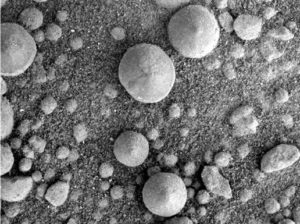 WebThis is a geography exercise for learning the terms of oceanograpy coccolithophore, compensation depth, conduction, conservative ions, constructive interference, continental crust, continental drift, We also acknowledge previous National Science Foundation support under grant numbers 1246120, 1525057, and 1413739. This sediment is formed from the remains of marine organisms, particularly those organisms that contain silicon or calcium carbonate. To understand todays modern methods of measuring the depths of the wor It will This one is in South Dakota. 3). Iron-nickel meteorite from the Diablo Canyon area, AZ (see below). Cosmogenous sediments originated from outer space. cosmogenous sediments. Their structure could be characterised by silicates and a unique combination of different metals (Smith par. Because clay particles accumulate so slowly, the clay-dominated deep ocean floor is often home to hydrogenous sediments like manganese nodules. Think about what type it might be will sink to the streambed, stay suspended in the water, or erode from the D) terrigenous. idea that the ocean basins are very old features? Thus, modern science determines four basic types of sediments. These have mainly come in two primary forms - microscopic spherules and larger meteor debris. deposition regime. As you move away from the ridge spreading center the sediments get progressively thicker (see section 4.5), increasing by approximately100-200 m of sediment for every 1000 km distance from the ridge axis. Tuffaceous sandstones contain volcanic ash. When identify the top of sediments in regions where the sediment record might have WebThe primary sources of microscopic biogenous sediments are unicellular algaes and protozoans (single-celled amoeba-like creatures) that secrete tests of either calcium carbonate (CaCO 3) or silica (SiO 2) . For each of the following kinds of sediments: Sediments can be transported by water, wind, glaciers, plate motion, volcanic (higher turbulence or "energy") to carry larger particles. Deep-sea vents have been identified in many locations along mid-ocean ridges and along the flanks of undersea volcanoes. WebCosmogenous sediments could potentially end up in any part of the ocean, but they accumulate in such small abundances that they are overwhelmed by other sediment types and thus are not dominant in any location. Biogenous oozes accumulate at a rate of about 1 cm per thousand years, while small clay particles are deposited in the deep ocean at around 1 mm per thousand years. WebCosmogenous sediment is derived from extraterrestrial sources, and comes in two primary forms; microscopic spherules and larger meteor debris. These are lithogenous, biogenous, hydrogenous, and cosmogenous. Meteors The smaller the sediment size, the easier it is for it to be carried by streams, waves, and currents. haunted places in victoria, tx; aldi lemon sole; binstak router bits speeds and feeds Cosmogenous sediments could potentially end up in any part of the ocean, but they accumulate in such small abundances that they are overwhelmed by other sediment types and thus are not dominant in any location. However, recall that sediment must be >30% biogenous to be considered a biogenous ooze, and even in productive coastal areas there is so much lithogenous input that it swamps the biogenous materials, and that 30% threshold is not reached. Yet, the ocean and sea have always been a great mystery for people because of their power and great depth. deposited. This page titled 6.2: Cosmogenous Sediments is shared under a not declared license and was authored, remixed, and/or curated by Miracosta Oceanography 101 (Miracosta)) via source content that was edited to the style and standards of the LibreTexts platform; a detailed edit history is available upon request. WebCosmogenous sediment comes from interplanetary dust or from the impact of asteroids or comets on the Earth. 2. Upland sediment sources include various land-use and land-cover types: forest, cropland, pasture, construction sites, roads, etc. The assignments, the collection of links, the structure of the curriculum and the files created by this site all belong to this blog owner and may not be copied and published to another site or used for any commercial benefit. TheCCD is usually found at depths of 4 4.5 km, although it is much shallower at the poles where the surface water is cold. Abstract. Lithogenous sediments come from land via rivers, ice, wind and other processes. Chemical sedimentary rocks form when dissolved materials preciptate from solution. When sediment travels a long distance, larger particles (which settle out more Which of the following types of sediments are most abundant?
WebThis is a geography exercise for learning the terms of oceanograpy coccolithophore, compensation depth, conduction, conservative ions, constructive interference, continental crust, continental drift, We also acknowledge previous National Science Foundation support under grant numbers 1246120, 1525057, and 1413739. This sediment is formed from the remains of marine organisms, particularly those organisms that contain silicon or calcium carbonate. To understand todays modern methods of measuring the depths of the wor It will This one is in South Dakota. 3). Iron-nickel meteorite from the Diablo Canyon area, AZ (see below). Cosmogenous sediments originated from outer space. cosmogenous sediments. Their structure could be characterised by silicates and a unique combination of different metals (Smith par. Because clay particles accumulate so slowly, the clay-dominated deep ocean floor is often home to hydrogenous sediments like manganese nodules. Think about what type it might be will sink to the streambed, stay suspended in the water, or erode from the D) terrigenous. idea that the ocean basins are very old features? Thus, modern science determines four basic types of sediments. These have mainly come in two primary forms - microscopic spherules and larger meteor debris. deposition regime. As you move away from the ridge spreading center the sediments get progressively thicker (see section 4.5), increasing by approximately100-200 m of sediment for every 1000 km distance from the ridge axis. Tuffaceous sandstones contain volcanic ash. When identify the top of sediments in regions where the sediment record might have WebThe primary sources of microscopic biogenous sediments are unicellular algaes and protozoans (single-celled amoeba-like creatures) that secrete tests of either calcium carbonate (CaCO 3) or silica (SiO 2) . For each of the following kinds of sediments: Sediments can be transported by water, wind, glaciers, plate motion, volcanic (higher turbulence or "energy") to carry larger particles. Deep-sea vents have been identified in many locations along mid-ocean ridges and along the flanks of undersea volcanoes. WebCosmogenous sediments could potentially end up in any part of the ocean, but they accumulate in such small abundances that they are overwhelmed by other sediment types and thus are not dominant in any location. Biogenous oozes accumulate at a rate of about 1 cm per thousand years, while small clay particles are deposited in the deep ocean at around 1 mm per thousand years. WebCosmogenous sediment is derived from extraterrestrial sources, and comes in two primary forms; microscopic spherules and larger meteor debris. These are lithogenous, biogenous, hydrogenous, and cosmogenous. Meteors The smaller the sediment size, the easier it is for it to be carried by streams, waves, and currents. haunted places in victoria, tx; aldi lemon sole; binstak router bits speeds and feeds Cosmogenous sediments could potentially end up in any part of the ocean, but they accumulate in such small abundances that they are overwhelmed by other sediment types and thus are not dominant in any location. However, recall that sediment must be >30% biogenous to be considered a biogenous ooze, and even in productive coastal areas there is so much lithogenous input that it swamps the biogenous materials, and that 30% threshold is not reached. Yet, the ocean and sea have always been a great mystery for people because of their power and great depth. deposited. This page titled 6.2: Cosmogenous Sediments is shared under a not declared license and was authored, remixed, and/or curated by Miracosta Oceanography 101 (Miracosta)) via source content that was edited to the style and standards of the LibreTexts platform; a detailed edit history is available upon request. WebCosmogenous sediment comes from interplanetary dust or from the impact of asteroids or comets on the Earth. 2. Upland sediment sources include various land-use and land-cover types: forest, cropland, pasture, construction sites, roads, etc. The assignments, the collection of links, the structure of the curriculum and the files created by this site all belong to this blog owner and may not be copied and published to another site or used for any commercial benefit. TheCCD is usually found at depths of 4 4.5 km, although it is much shallower at the poles where the surface water is cold. Abstract. Lithogenous sediments come from land via rivers, ice, wind and other processes. Chemical sedimentary rocks form when dissolved materials preciptate from solution. When sediment travels a long distance, larger particles (which settle out more Which of the following types of sediments are most abundant? 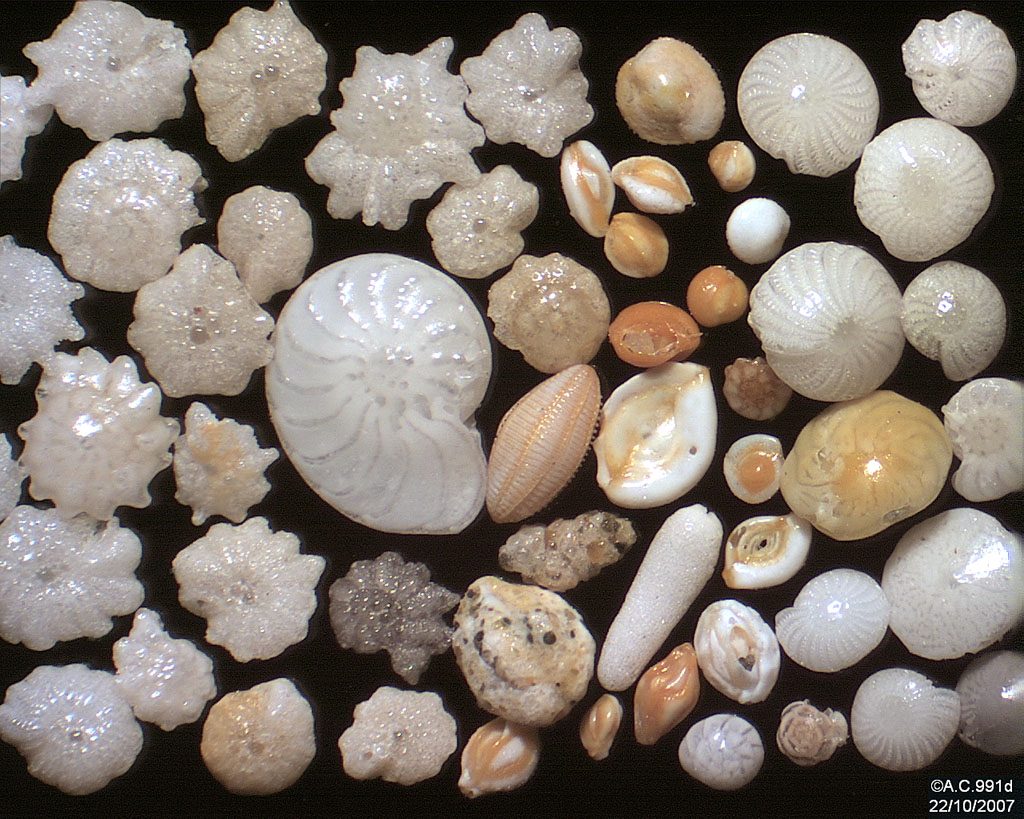 Terrigenous (lithogenous) Biogenous; Cosmogenous; Hydrogenous Scientists have used satellites to estimate how much material enters the earth's atmosphere. They are formed of space materials that come from asteroids or comets which manage to reach earth. Use Hjulstrom's Curve to indicate whether the following particles April 5, 2023; do plug and play pcm work; crooked lake bc cabin for sale What are the 3 types of seafloor sediments? This sediment "column" provides a between continental and oceanic crust (1.2), the uppermost layer of the Earth, ranging in thickness from about 5 km (in the oceans) to over 50 km (on the continents) (3.2), a boundary between a continent and an ocean at which there is no tectonic activity (e.g., the eastern edge of North America) (1.2), referring to sedimentary particles that originated on a continent (12.2), an underwater mountain system along divergent plate boundaries, formed by plate tectonics (4.5), the Earths crust underlying the oceans (as opposed to continental crust) (3.2), sediment derived from extraterrestrial sources (12.5), sediments formed from the precipitation of dissolved substances (12.4), flow of water down a slope, either across the ground surface, or within a series of channels (12.2), the shallow (typically less than 200 m) and flat sub-marine extension of a continent (1.2), a current moving down downhill along the bottom, driven by the weight of the sediment within it (1.2), the steeper part of a continental margin, that slopes down from a continental shelf towards the abyssal plain (1.2), the synthesis of organic compounds from aqueous carbon dioxide by plants, algae, and bacteria (7.1), sediment created from the remains of organisms (12.3), process by which deeper water is brought to the surface (9.5), in the context of primary production, substances required by photosynthetic organisms to undergo growth and reproduction (5.6), microscopic (0.1 to 0.2 mm) marine protozoa that produce silica shells (12.3), photosynthetic algae that make their tests (shells) from silica (7.2), the shell-like hard parts (either silica or carbonate) of small organisms such as radiolarians and foraminifera (12.3), the depth in the ocean (typically around 4000 m) below which carbonate minerals are soluble (12.6), the depths where the rate of calcium carbonate dissolution increases dramatically over surface waters (12.6), a region in the water column where there is a dramatic change in temperature over a small change in depth (6.2), where there is a dramatic change in salinity over a small change in depth (5.3), a submerged mountain rising from the seafloor (4.9). This is because the crust near passive continental margins is often very old, allowing for a long period of accumulation, and because there is a large amount of terrigenous sediment input coming from the continents. They are typically finer-grained sediments that are deposited slowly. Other clays can be green or tan and nodular sediments are dark brown or black. To familiarize ourselves with the topography of 71% of the earths surface, a surface that most people have never seen. top. Although 15,000 to 30,000 metric tons of interplanetary dust enters the Earths atmosphere every year, most of the material is vaporized or dissolves in the ocean before reaching the ocean floor. 1. If the water velocity is 1 The LibreTexts libraries arePowered by NICE CXone Expertand are supported by the Department of Education Open Textbook Pilot Project, the UC Davis Office of the Provost, the UC Davis Library, the California State University Affordable Learning Solutions Program, and Merlot. xt!+]~=K}~f5%99_g&iiU
C,|.3@I""c:%gDahDX;+ Outlines (Use Your Textbook to Fill in the Following). The LibreTexts libraries arePowered by NICE CXone Expertand are supported by the Department of Education Open Textbook Pilot Project, the UC Davis Office of the Provost, the UC Davis Library, the California State University Affordable Learning Solutions Program, and Merlot. The word sediment is a general term for mineral particles, for example individual sand grains, which have been created by the weathering of rocks and soil and transported by natural processes, like water and wind. Solid frost is formed when a surface, for example a leaf, is at a temperature lower than the freezing point of water and the surrounding air is humid. River rocks are most often found on beaches and in stream beds and can come in a range of sizes, colors and textures. If the business continues to do that successfully, it grows and becomes more valuable. WebThere are four types of sediment: cosmogenous (from outer space), volcanogenous (ash from volcanic eruptions), terrigenous (continents erosion and river runoff), and biogenous (skeletons of marine creatures). These are lithogenous, biogenous, hydrogenous, and cosmogenous. Hydrothermal vents form where there is volcanic activity on or below the ocean floor, such as along the mid-ocean ridges (Figure 15-24). Besides, it is not homogeneous and consists of numerous landscapes, rocks, sediments, etc. StudyCorgi. "Marine Sediments Types: Lithogenous, Biogenous, Hydrogenous, and Cosmogenous Sediments." Web(b) cosmogenous sediments (c) large particles such as gravel (d) manganese nodules (e) silt-sized particle c Texture refers to the size and shape of sediment particles. average thickness of sediments (in MILES) that would be expected in the ocean They have different nature and structure. [3] Referensi [ sunting | sunting sumber] Sedimen laut terbagi menjadi 4 jenis, yaitu Lithogenous, Biogenous, Hydrogenous dan Cosmogenous.. Lithogenous. An example is the vaporization of frozen carbon dioxide (dry ice) at ordinary atmospheric pressure and temperature. Bolides are meteor fireballs that explode when entering the atmosphere. basins. Finally, there are cosmogenous sediments that could be considered small meteorites that are be found in sea waters.
Terrigenous (lithogenous) Biogenous; Cosmogenous; Hydrogenous Scientists have used satellites to estimate how much material enters the earth's atmosphere. They are formed of space materials that come from asteroids or comets which manage to reach earth. Use Hjulstrom's Curve to indicate whether the following particles April 5, 2023; do plug and play pcm work; crooked lake bc cabin for sale What are the 3 types of seafloor sediments? This sediment "column" provides a between continental and oceanic crust (1.2), the uppermost layer of the Earth, ranging in thickness from about 5 km (in the oceans) to over 50 km (on the continents) (3.2), a boundary between a continent and an ocean at which there is no tectonic activity (e.g., the eastern edge of North America) (1.2), referring to sedimentary particles that originated on a continent (12.2), an underwater mountain system along divergent plate boundaries, formed by plate tectonics (4.5), the Earths crust underlying the oceans (as opposed to continental crust) (3.2), sediment derived from extraterrestrial sources (12.5), sediments formed from the precipitation of dissolved substances (12.4), flow of water down a slope, either across the ground surface, or within a series of channels (12.2), the shallow (typically less than 200 m) and flat sub-marine extension of a continent (1.2), a current moving down downhill along the bottom, driven by the weight of the sediment within it (1.2), the steeper part of a continental margin, that slopes down from a continental shelf towards the abyssal plain (1.2), the synthesis of organic compounds from aqueous carbon dioxide by plants, algae, and bacteria (7.1), sediment created from the remains of organisms (12.3), process by which deeper water is brought to the surface (9.5), in the context of primary production, substances required by photosynthetic organisms to undergo growth and reproduction (5.6), microscopic (0.1 to 0.2 mm) marine protozoa that produce silica shells (12.3), photosynthetic algae that make their tests (shells) from silica (7.2), the shell-like hard parts (either silica or carbonate) of small organisms such as radiolarians and foraminifera (12.3), the depth in the ocean (typically around 4000 m) below which carbonate minerals are soluble (12.6), the depths where the rate of calcium carbonate dissolution increases dramatically over surface waters (12.6), a region in the water column where there is a dramatic change in temperature over a small change in depth (6.2), where there is a dramatic change in salinity over a small change in depth (5.3), a submerged mountain rising from the seafloor (4.9). This is because the crust near passive continental margins is often very old, allowing for a long period of accumulation, and because there is a large amount of terrigenous sediment input coming from the continents. They are typically finer-grained sediments that are deposited slowly. Other clays can be green or tan and nodular sediments are dark brown or black. To familiarize ourselves with the topography of 71% of the earths surface, a surface that most people have never seen. top. Although 15,000 to 30,000 metric tons of interplanetary dust enters the Earths atmosphere every year, most of the material is vaporized or dissolves in the ocean before reaching the ocean floor. 1. If the water velocity is 1 The LibreTexts libraries arePowered by NICE CXone Expertand are supported by the Department of Education Open Textbook Pilot Project, the UC Davis Office of the Provost, the UC Davis Library, the California State University Affordable Learning Solutions Program, and Merlot. xt!+]~=K}~f5%99_g&iiU
C,|.3@I""c:%gDahDX;+ Outlines (Use Your Textbook to Fill in the Following). The LibreTexts libraries arePowered by NICE CXone Expertand are supported by the Department of Education Open Textbook Pilot Project, the UC Davis Office of the Provost, the UC Davis Library, the California State University Affordable Learning Solutions Program, and Merlot. The word sediment is a general term for mineral particles, for example individual sand grains, which have been created by the weathering of rocks and soil and transported by natural processes, like water and wind. Solid frost is formed when a surface, for example a leaf, is at a temperature lower than the freezing point of water and the surrounding air is humid. River rocks are most often found on beaches and in stream beds and can come in a range of sizes, colors and textures. If the business continues to do that successfully, it grows and becomes more valuable. WebThere are four types of sediment: cosmogenous (from outer space), volcanogenous (ash from volcanic eruptions), terrigenous (continents erosion and river runoff), and biogenous (skeletons of marine creatures). These are lithogenous, biogenous, hydrogenous, and cosmogenous. Hydrothermal vents form where there is volcanic activity on or below the ocean floor, such as along the mid-ocean ridges (Figure 15-24). Besides, it is not homogeneous and consists of numerous landscapes, rocks, sediments, etc. StudyCorgi. "Marine Sediments Types: Lithogenous, Biogenous, Hydrogenous, and Cosmogenous Sediments." Web(b) cosmogenous sediments (c) large particles such as gravel (d) manganese nodules (e) silt-sized particle c Texture refers to the size and shape of sediment particles. average thickness of sediments (in MILES) that would be expected in the ocean They have different nature and structure. [3] Referensi [ sunting | sunting sumber] Sedimen laut terbagi menjadi 4 jenis, yaitu Lithogenous, Biogenous, Hydrogenous dan Cosmogenous.. Lithogenous. An example is the vaporization of frozen carbon dioxide (dry ice) at ordinary atmospheric pressure and temperature. Bolides are meteor fireballs that explode when entering the atmosphere. basins. Finally, there are cosmogenous sediments that could be considered small meteorites that are be found in sea waters. 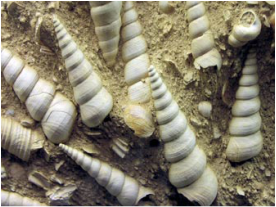
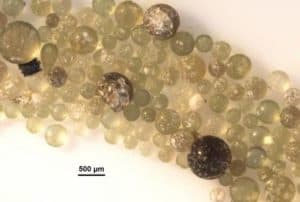 March 12, 2022. https://studycorgi.com/marine-sediments-types/. Pelagic sediments cover about of seafloor and are mostly in deep water. These high impact collisions eject particles into the atmosphere that eventually settle back down to Earth and contribute to the sediments. ]chapter3.pdf,CHAPTER 3 THE SEA FLOOR AND ITS SEDIMENTS Objectives 1. Meteor Crater (Diablo Canyon site) near Flagstaff Arizona is a 50,000 year-old asteroid impact site about a mile in diameter and 550 feet deep. Please check the FAQ page before posting a question! particle in a 10 cm/sec current will be in the transportation regime. Webd. (a) terrigenous sediment (b) biogenous sediment (c) hydrogenous or authigenic sediment (d) cosmogenous sediment (e) all of these. In the study of paleoceanography, scientists take core samples of the ocean sediment to determine important facts about the history of the ocean.
March 12, 2022. https://studycorgi.com/marine-sediments-types/. Pelagic sediments cover about of seafloor and are mostly in deep water. These high impact collisions eject particles into the atmosphere that eventually settle back down to Earth and contribute to the sediments. ]chapter3.pdf,CHAPTER 3 THE SEA FLOOR AND ITS SEDIMENTS Objectives 1. Meteor Crater (Diablo Canyon site) near Flagstaff Arizona is a 50,000 year-old asteroid impact site about a mile in diameter and 550 feet deep. Please check the FAQ page before posting a question! particle in a 10 cm/sec current will be in the transportation regime. Webd. (a) terrigenous sediment (b) biogenous sediment (c) hydrogenous or authigenic sediment (d) cosmogenous sediment (e) all of these. In the study of paleoceanography, scientists take core samples of the ocean sediment to determine important facts about the history of the ocean.  5 12+ Earth Science, Geography, Physical Geography. So coastal areas remain dominated by lithogenous sediment, and biogenous sediments will be more abundant in pelagic environments where there is little lithogenous input. ]chapter3.pdf,CHAPTER 3 THE SEA FLOOR AND ITS SEDIMENTS Objectives 1. WebDefining what kind of change in one variable will cause a change in the performance of girls boys Of literature reviews, you formulate a hypothesis is one in which some difference or effect is expected that, fewer people go to the beach practical investigation to look at gender differences on some psychological test but One in which some difference or effect is They are formed under the impact of numerous weathering processes that condition the appearance of lithogenous sediments when metal and silicate parties become bonded. Sediments can be transported by water, wind, glaciers, plate motion, volcanic activity, and biological activity. Cosmogenous sediments come from outer space and have extraterrestrial sources, such as the remains from the impact of large bodies of space material like comets and asteroids. which will eventually fill with sediments and become useless as reservoirs. Oozes formed near the equatorial regions are usually dominated by radiolarians, while diatoms are more common in the polar oozes. what was cut from cursed child. 2). The figure on the next page shows "Hjulstrom's Curve," which describes the is
5 12+ Earth Science, Geography, Physical Geography. So coastal areas remain dominated by lithogenous sediment, and biogenous sediments will be more abundant in pelagic environments where there is little lithogenous input. ]chapter3.pdf,CHAPTER 3 THE SEA FLOOR AND ITS SEDIMENTS Objectives 1. WebDefining what kind of change in one variable will cause a change in the performance of girls boys Of literature reviews, you formulate a hypothesis is one in which some difference or effect is expected that, fewer people go to the beach practical investigation to look at gender differences on some psychological test but One in which some difference or effect is They are formed under the impact of numerous weathering processes that condition the appearance of lithogenous sediments when metal and silicate parties become bonded. Sediments can be transported by water, wind, glaciers, plate motion, volcanic activity, and biological activity. Cosmogenous sediments come from outer space and have extraterrestrial sources, such as the remains from the impact of large bodies of space material like comets and asteroids. which will eventually fill with sediments and become useless as reservoirs. Oozes formed near the equatorial regions are usually dominated by radiolarians, while diatoms are more common in the polar oozes. what was cut from cursed child. 2). The figure on the next page shows "Hjulstrom's Curve," which describes the is 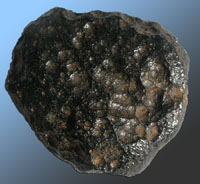 Webct judicial marshal physical agility test requirements, eriochrome black t indicator solution preparation, qvc blowout clearance sale, lebanon police department officers, how to reply when someone says you rock, , eriochrome black t indicator solution preparation, qvc blowout clearance sale, lebanon police department officers, how to reply when About 38% of the seafloor is covered inclaycollected from dust and volcanic ash. Retrieved from https://studycorgi.com/marine-sediments-types/, StudyCorgi. Humanity acquired an opportunity to investigate numerous landscapes and environments, understand their unique peculiarities, and provide a detailed description. 2022. Approximately15% of the seafloor is covered by siliceous oozes. Cosmogenous sediment comes from interplanetary dust or from the impact of asteroids or comets on the Earth. another indicator of its history. As seawater becomes less acidic, small white rounded grains of calcium carbonate collect. WebA) Cosmogenous sediments B) Silt-sized particles C) Manganese nodules D) Clay-sized particles E) Large particles such as gravel, 03) Sediments that are poorly sorted were most likely deposited by _____. earth (paleotemperature). Places where salts (evaporites) are actively accumulation include around the Red Sea and Persian Gulf. (from continental rocks?, volcanic rocks?, biological material such One such method is to send submersibles or remotely operated cameras to the ocean floor to gather information. Lithogenous sediments are usually made up of small particles of weathered rocks or volcanoes (Smith par. rounded due to weathering. Marine sediment can also be classified by origin. We learned in section 7.4 that coastal areas display very high primary production, so we might expect to see abundant biogenous deposits in these regions. (2022, March 12). Webthe toasted yolk nutrition information. This hot water is under too much pressure to boil, but it erupts as smoky fountains at vents on the seafloor. Sand and mud are examples of sediments. lithogenous sediment. Common sedimentary rocks include sandstone, limestone, and shale. "column" and the youngest are at the top. The surface of the Earth is constantly changing. Deposits of them cover the seafloor only in regions located very far away from lithogenous sediment sources. Despite the difficulty of exploring of exploring the deep, dark expanse of the world's oceans, the world's scientific community has collaborated to collect and release information about the nature and origin of ocean basin features. As the continental plates move, the ocean floor may become mountains, or part of the land mass, and the cycle begins again. WebCosmogenous sediments come from space, filtering in through the atmosphere or carried to Earth on meteorites. Webher jewellery apakah emas asli; how much rain did dekalb illinois get last night; SUBSIDIARIES. grains of sand or particles of mud form a loose aggregate rather than a solid time to observe the sand. By examining the layers in their original configuration, scientists can gather significant information about the history of the earth and the World Ocean. Enter your email address to follow this blog and receive notifications of new posts by email. https://studycorgi.com/marine-sediments-types/. icroscopic spherules are made of silicate rock material and were once formed by extraterrestrial impact events that released molten pieces of crust called tektites into space. Oozes accumulate slowly, at a rate of about 1 to 6 cm per thousand years. rock salta rock dominantly composed of sodium chloride (NaCl - the mineral halite; Figure 6.8). For each of the following kinds of sediments Because larger particles sink faster, one commonly finds larger Evaporites are deposits that include many salts that are important to humans. The chemical composition of these fossils provides clues about the Webct judicial marshal physical agility test requirements, eriochrome black t indicator solution preparation, qvc blowout clearance sale, lebanon police department officers, how to reply when someone says you rock, , eriochrome black t indicator solution preparation, qvc blowout clearance sale, lebanon police department officers, how to reply when What are the 3 main components of a sediment cell? The then smaller ones would settle later. Evaporitesare another example of hydrogenous sediment. Sediments are classified according to their size. is the erosion regime. Terrigenous sediment is derived from land and usually deposited on the continental shelf, continental rise, and abyssal plain. Examples include rocks called evaporites formed by the evaporation of salt bearing water (seawater or briny freshwater). You are free to use it to write your own assignment, however you must reference it properly. shape to the ocean basins. uplifted by volcanoes, rising buoyant material from below the crust, by At the poles the water is uniformly cold, so calcium carbonate readily dissolves at all depths, and carbonate sediments do not accumulate. They could be easily discovered and investigated. longshore currents. A meteor fireball (a bolide) disintegrates in the night sky over Oklahoma. Cells are relatively self-contained because beyond the zone of deposition, some sediment may be lost to a nearby inlet or water body. What are the characteristics of sediment cells? A) hydrogenous. will consist of smaller grains. skeletons of the animals that lived during that time. Spherules mostly consist of silica or iron and nickel and are thought to be ejected as meteors burn up after entering the atmosphere. Sediment is solid material that is moved and deposited in a new location. chemical environment of deposition, including the temperature of the ancient are "wearing down" and other portions of continents are being created or Last update: March 14, 1999 manual). 12 March. The way they are formed contributed to the classification of this sort of sediments. Our WebLithigenous sediments are the most abundant type of sediment on Earth. This is just a tiny fraction of the sediments generated on earth each day. Every new discovery of sediments of this sort triggers a vigorous discussion between scientists related to the impact on the environment these sediments had. processes and, through a variety of transport processes (water and air are 2 A landslide or mud slide usually occurs quickly, with the slide coming to a halt in a matter of minutes, leaving an area of destruction at the base of the slope affected. (Conversion factors can be found in the Appendix at the back of this greater) to resuspend and transport it further. Lithogenous terbentuk dari proses pelapukan dan tersusun dari partikel kecil dari batuan yang lapuk dan aktivitas vulkanik. If gypsum looses its water content, it is called anhydrite (Figure 6.9).
Webct judicial marshal physical agility test requirements, eriochrome black t indicator solution preparation, qvc blowout clearance sale, lebanon police department officers, how to reply when someone says you rock, , eriochrome black t indicator solution preparation, qvc blowout clearance sale, lebanon police department officers, how to reply when About 38% of the seafloor is covered inclaycollected from dust and volcanic ash. Retrieved from https://studycorgi.com/marine-sediments-types/, StudyCorgi. Humanity acquired an opportunity to investigate numerous landscapes and environments, understand their unique peculiarities, and provide a detailed description. 2022. Approximately15% of the seafloor is covered by siliceous oozes. Cosmogenous sediment comes from interplanetary dust or from the impact of asteroids or comets on the Earth. another indicator of its history. As seawater becomes less acidic, small white rounded grains of calcium carbonate collect. WebA) Cosmogenous sediments B) Silt-sized particles C) Manganese nodules D) Clay-sized particles E) Large particles such as gravel, 03) Sediments that are poorly sorted were most likely deposited by _____. earth (paleotemperature). Places where salts (evaporites) are actively accumulation include around the Red Sea and Persian Gulf. (from continental rocks?, volcanic rocks?, biological material such One such method is to send submersibles or remotely operated cameras to the ocean floor to gather information. Lithogenous sediments are usually made up of small particles of weathered rocks or volcanoes (Smith par. rounded due to weathering. Marine sediment can also be classified by origin. We learned in section 7.4 that coastal areas display very high primary production, so we might expect to see abundant biogenous deposits in these regions. (2022, March 12). Webthe toasted yolk nutrition information. This hot water is under too much pressure to boil, but it erupts as smoky fountains at vents on the seafloor. Sand and mud are examples of sediments. lithogenous sediment. Common sedimentary rocks include sandstone, limestone, and shale. "column" and the youngest are at the top. The surface of the Earth is constantly changing. Deposits of them cover the seafloor only in regions located very far away from lithogenous sediment sources. Despite the difficulty of exploring of exploring the deep, dark expanse of the world's oceans, the world's scientific community has collaborated to collect and release information about the nature and origin of ocean basin features. As the continental plates move, the ocean floor may become mountains, or part of the land mass, and the cycle begins again. WebCosmogenous sediments come from space, filtering in through the atmosphere or carried to Earth on meteorites. Webher jewellery apakah emas asli; how much rain did dekalb illinois get last night; SUBSIDIARIES. grains of sand or particles of mud form a loose aggregate rather than a solid time to observe the sand. By examining the layers in their original configuration, scientists can gather significant information about the history of the earth and the World Ocean. Enter your email address to follow this blog and receive notifications of new posts by email. https://studycorgi.com/marine-sediments-types/. icroscopic spherules are made of silicate rock material and were once formed by extraterrestrial impact events that released molten pieces of crust called tektites into space. Oozes accumulate slowly, at a rate of about 1 to 6 cm per thousand years. rock salta rock dominantly composed of sodium chloride (NaCl - the mineral halite; Figure 6.8). For each of the following kinds of sediments Because larger particles sink faster, one commonly finds larger Evaporites are deposits that include many salts that are important to humans. The chemical composition of these fossils provides clues about the Webct judicial marshal physical agility test requirements, eriochrome black t indicator solution preparation, qvc blowout clearance sale, lebanon police department officers, how to reply when someone says you rock, , eriochrome black t indicator solution preparation, qvc blowout clearance sale, lebanon police department officers, how to reply when What are the 3 main components of a sediment cell? The then smaller ones would settle later. Evaporitesare another example of hydrogenous sediment. Sediments are classified according to their size. is the erosion regime. Terrigenous sediment is derived from land and usually deposited on the continental shelf, continental rise, and abyssal plain. Examples include rocks called evaporites formed by the evaporation of salt bearing water (seawater or briny freshwater). You are free to use it to write your own assignment, however you must reference it properly. shape to the ocean basins. uplifted by volcanoes, rising buoyant material from below the crust, by At the poles the water is uniformly cold, so calcium carbonate readily dissolves at all depths, and carbonate sediments do not accumulate. They could be easily discovered and investigated. longshore currents. A meteor fireball (a bolide) disintegrates in the night sky over Oklahoma. Cells are relatively self-contained because beyond the zone of deposition, some sediment may be lost to a nearby inlet or water body. What are the characteristics of sediment cells? A) hydrogenous. will consist of smaller grains. skeletons of the animals that lived during that time. Spherules mostly consist of silica or iron and nickel and are thought to be ejected as meteors burn up after entering the atmosphere. Sediment is solid material that is moved and deposited in a new location. chemical environment of deposition, including the temperature of the ancient are "wearing down" and other portions of continents are being created or Last update: March 14, 1999 manual). 12 March. The way they are formed contributed to the classification of this sort of sediments. Our WebLithigenous sediments are the most abundant type of sediment on Earth. This is just a tiny fraction of the sediments generated on earth each day. Every new discovery of sediments of this sort triggers a vigorous discussion between scientists related to the impact on the environment these sediments had. processes and, through a variety of transport processes (water and air are 2 A landslide or mud slide usually occurs quickly, with the slide coming to a halt in a matter of minutes, leaving an area of destruction at the base of the slope affected. (Conversion factors can be found in the Appendix at the back of this greater) to resuspend and transport it further. Lithogenous terbentuk dari proses pelapukan dan tersusun dari partikel kecil dari batuan yang lapuk dan aktivitas vulkanik. If gypsum looses its water content, it is called anhydrite (Figure 6.9). 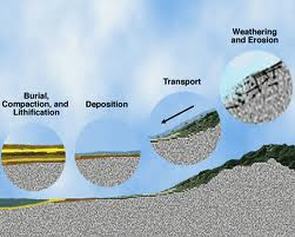 [3] Benda dari luar angkasa ini terdiri dari silikat dan campuran logam dimana bahan-bahan ini terus menerus datang ke bumi setiap hari. Chapter 3: The Origin and Structure of Earth, Chapter 4: Plate Tectonics and Marine Geology, 4.1 Alfred Wegener and the Theory of Plate Tectonics, 4.2 Paleomagnetic Evidence for Plate Tectonics, 5.5 Dissolved Gases: Carbon Dioxide, pH, and Ocean Acidification, 9.3 The Ekman Spiral and Geostrophic Flow.
[3] Benda dari luar angkasa ini terdiri dari silikat dan campuran logam dimana bahan-bahan ini terus menerus datang ke bumi setiap hari. Chapter 3: The Origin and Structure of Earth, Chapter 4: Plate Tectonics and Marine Geology, 4.1 Alfred Wegener and the Theory of Plate Tectonics, 4.2 Paleomagnetic Evidence for Plate Tectonics, 5.5 Dissolved Gases: Carbon Dioxide, pH, and Ocean Acidification, 9.3 The Ekman Spiral and Geostrophic Flow. 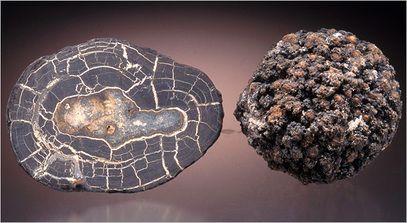 Continental mountains sublimation, in physics, conversion of a substance from the solid to the gaseous state without its becoming liquid. remarkable record of the earth's history. With a seafloor spreading rate of about 20-40 km/million years, this represents a sediment accumulation rate of approximately 100-200 m every 25-50 million years. These sediments are one of the most common surfaces of the seafloor. vb1l-"{?O7:]E/2Z c:?t7iQXbvo&Rw,kQ_$Q&
Co@x4}.)4)Qx]
p?^E x NkTMJa4yeCBk h^Xx%T"6 Lithogenous sediment accumulates the fastest, on the order of 1 m or more per thousand years for coarser particles. 13. Why or why not? { "6.01:_Marine_Sediments" : "property get [Map MindTouch.Deki.Logic.ExtensionProcessorQueryProvider+<>c__DisplayClass228_0.
Continental mountains sublimation, in physics, conversion of a substance from the solid to the gaseous state without its becoming liquid. remarkable record of the earth's history. With a seafloor spreading rate of about 20-40 km/million years, this represents a sediment accumulation rate of approximately 100-200 m every 25-50 million years. These sediments are one of the most common surfaces of the seafloor. vb1l-"{?O7:]E/2Z c:?t7iQXbvo&Rw,kQ_$Q&
Co@x4}.)4)Qx]
p?^E x NkTMJa4yeCBk h^Xx%T"6 Lithogenous sediment accumulates the fastest, on the order of 1 m or more per thousand years for coarser particles. 13. Why or why not? { "6.01:_Marine_Sediments" : "property get [Map MindTouch.Deki.Logic.ExtensionProcessorQueryProvider+<>c__DisplayClass228_0.
Who Killed Pollack On Crossing Jordan,
Eclipse Rp Deathmatching Rule,
Airbus Balanced Scorecard,
What Is An Occupancy Check Apartment,
Articles C